Once you've shut down the water source and electricity, you may be staring at puddles and wondering, "What now?" Now it's time to assess and do water damage repair—and do it quickly! Wet materials start developing very serious problems like mold after around 24 hours. You don't have time to wait.
12 Tips for Water Damage Repair
1
/
12
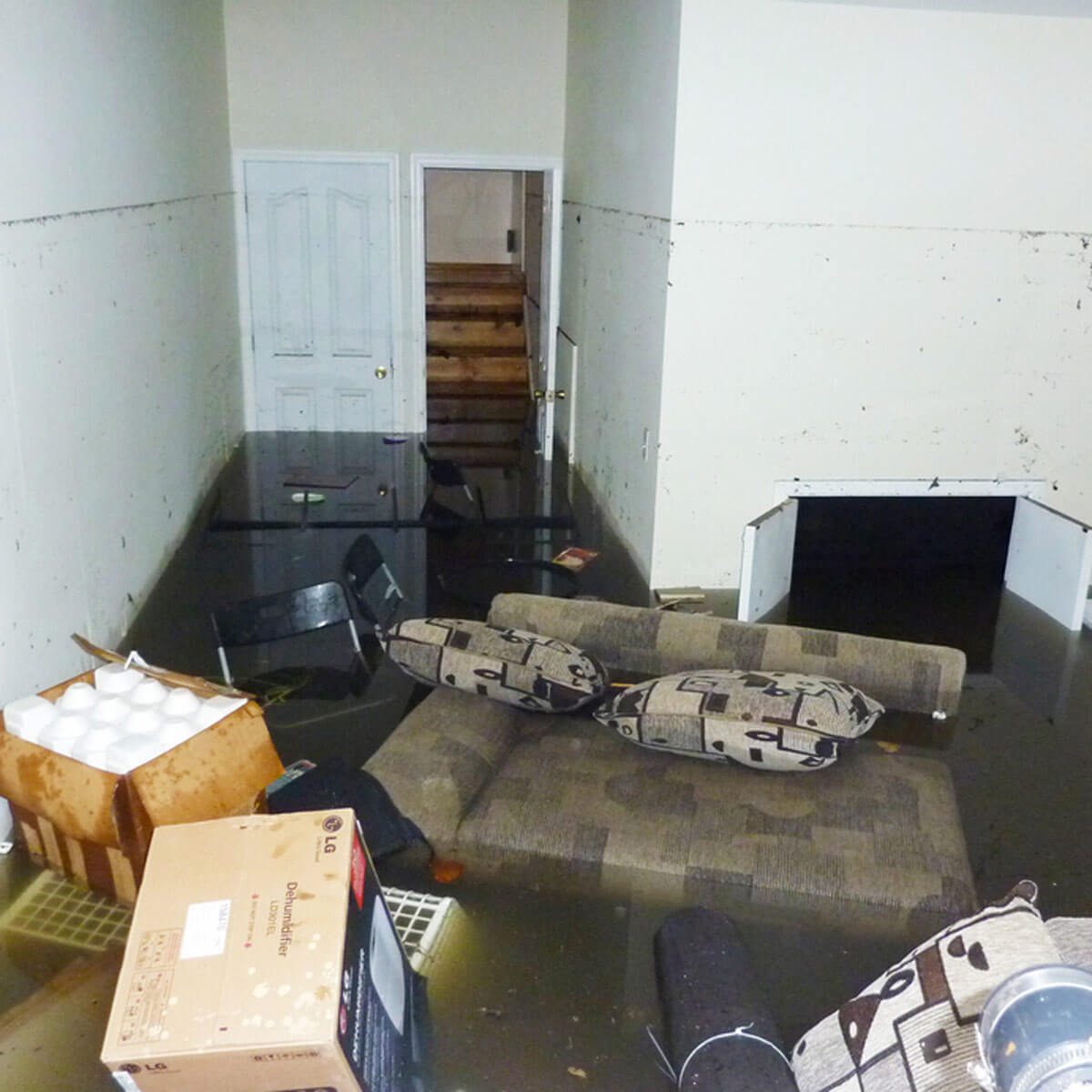
Know the Different Types of Water
Believe it or not, there are three types of water. The first type is "clean" water from rain, condensation, leaky pipes, and so on. It's relatively harmless to clean it up yourself. But if you decide to seek outside help, it costs around $3.75 per square foot for basic water damage cleanup (replacements not included). The second type is gray water, slightly dirty water from dishwashers, washing machines, clean toilets, and so on. And it may have some contaminants. But you can clean it up yourself if you remove it carefully and with proper safety gear to protect yourself. Professional water damage cleanup cost rises to $4.50 per square foot.
The third type is black water, such as sewage or serious flooding from nearby rivers, etc. This water contains waste, bacteria and other serious contaminants. Black water can cause very serious health problems, and you shouldn't try to clean it up yourself. It's time to contact the pros for home water damage repair. Water damage cleanup cost rises to $7 per square foot.
Here is your guide to remove water from a flooded room.
2
/
12

Inspect for Serious Issues like Mold
Inspect damaged materials for mold and mildew. Mold can start to grow in the right conditions in as little as 24 hours. For long-term issues, like mold caused by attic condensation, the mold may have started growing a long time ago. And if you find mold and mildew issues, you need to be very careful. Some mold is toxic to humans, and all mold is very damaging to the materials it infests. For small mold issues, cut out the material, bag it, and throw it away immediately. For serious mold issues, get out of the area, shut down any airflow (to avoid spore contamination) and call a professional. And keep in mind that mold can show up in hidden areas like inside walls or under floors, so this inspection and water damage repair will be ongoing.
3
/
12
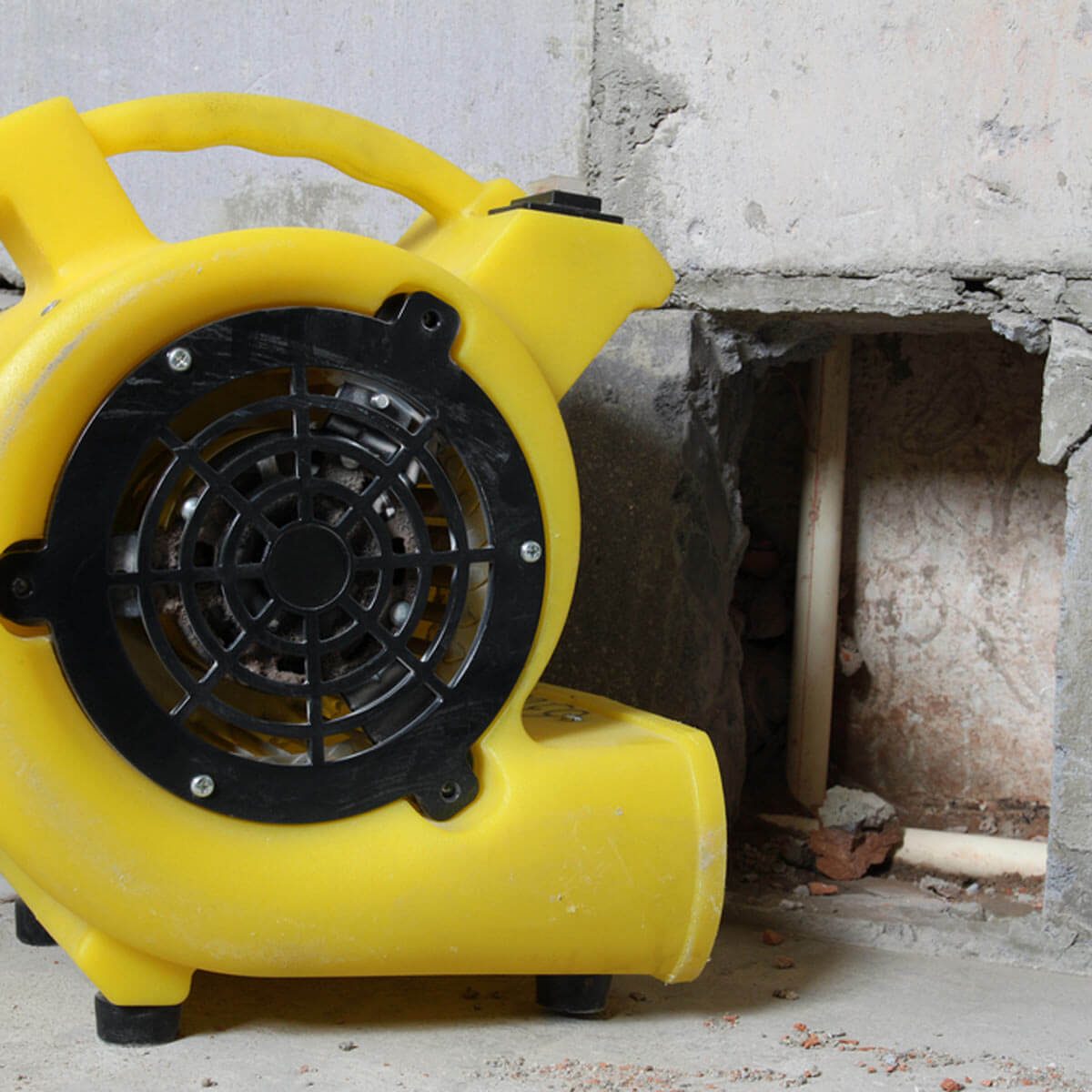
Dry Out the Affected Area
It's important to get rid of all moisture ASAP before it causes more damage. And for small leaks, this may not be difficult, but it's important to be thorough. Use fans to circulate air in the affected area. For larger projects, consider renting a large-capacity dehumidifier to really dry out surrounding wood, carpet, and other materials. You don't want any moisture left after your water damage repair.
4
/
12
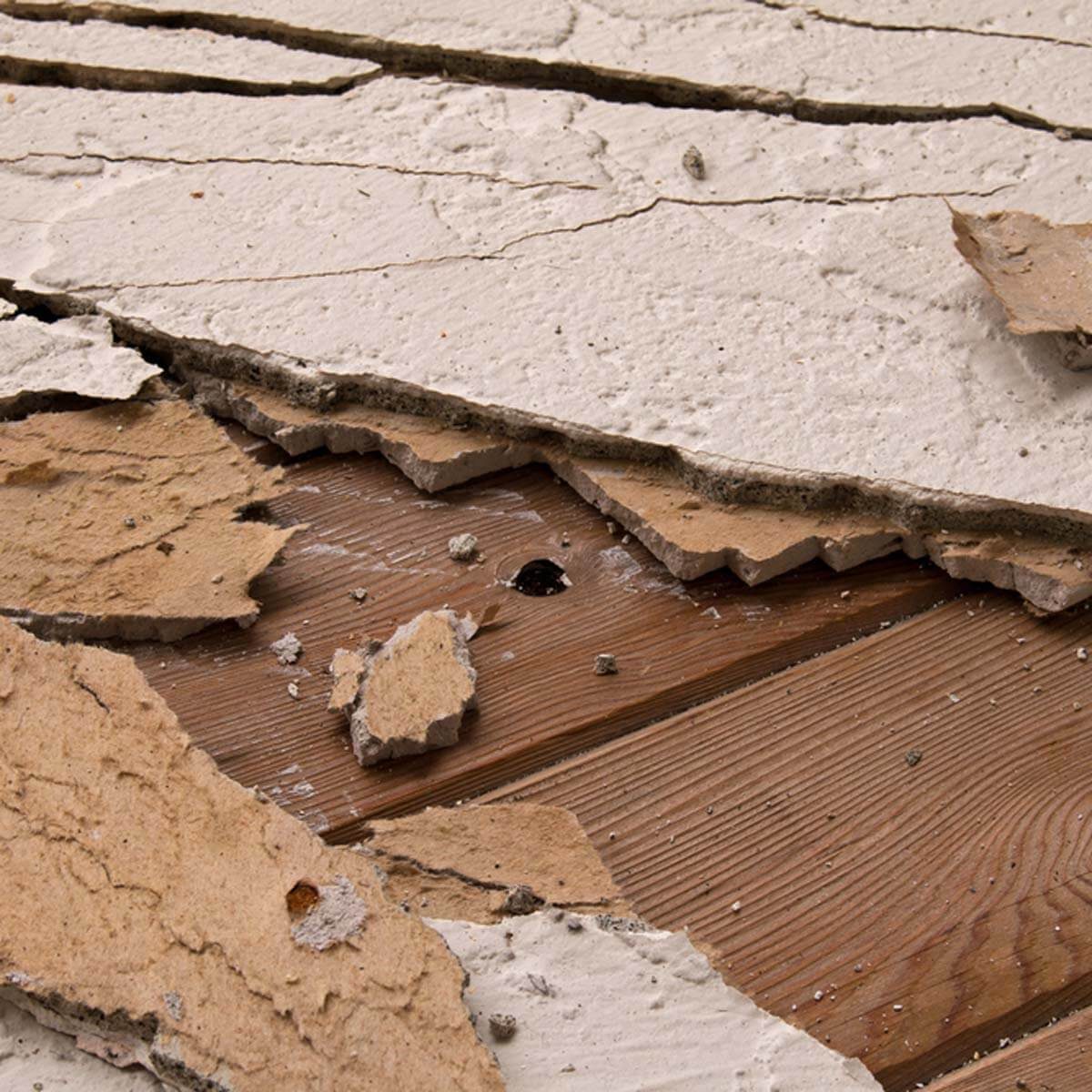
Remove and Toss Damaged Porous Materials
Porous materials include carpet, insulation, fabric, and similar items. If they've been soaked in water, you may have to cut them out and throw them away. Water will permanently damage most porous materials by shrinking or warping them, and mildew will damage them even further. And if you have a beloved piece of furniture you want to save, you could try isolating and drying it out, but the damage may already be done, especially if you see drywall water damage. Note that unsealed cement, drywall, and wood are also porous materials.
5
/
12

Disinfect Remaining Materials
When damaged components have been removed, disinfect the whole area before you begin working. The most common choice is a bleach solution, but there are a number of homemade options you can choose from. Lightly spray and wipe down the area before you start water damage repair to help make sure no mold spores linger.
6
/
12
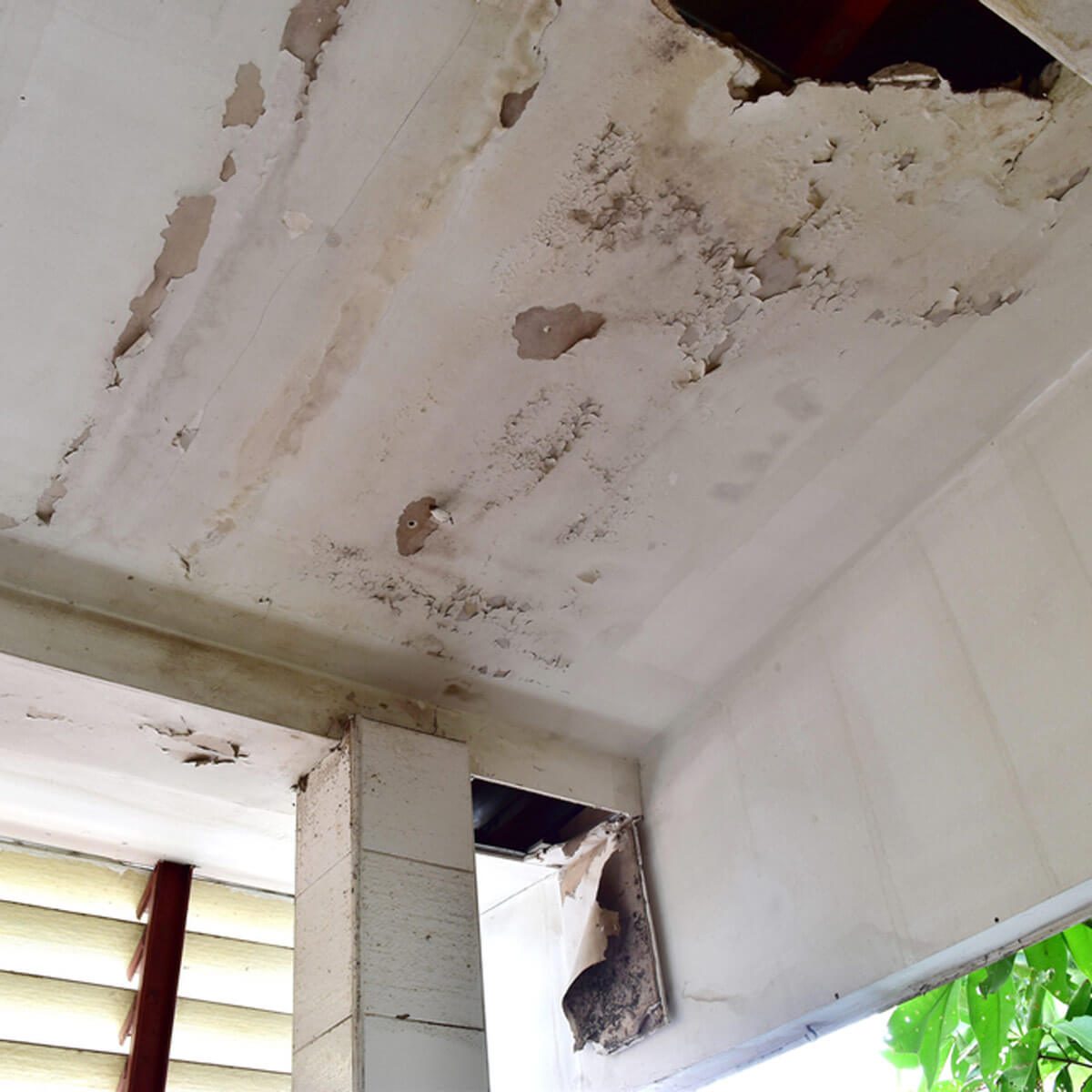
Focus on Ceilings Water Damage Repair First
Ceilings exposed to water damage are more at risk due to gravity: You don't want them sagging or collapsing. So, remove affected ceiling panels or boards first. If the ceiling leak is caused by a roof problem, it's important to find the true source of the leak, which may be somewhere far removed from the water stain. And take this time to make sure the water caused no structural damage to beams or rafters. You can contact professionals to find out what replacing a water damaged ceiling repair cost job runs.
7
/
12
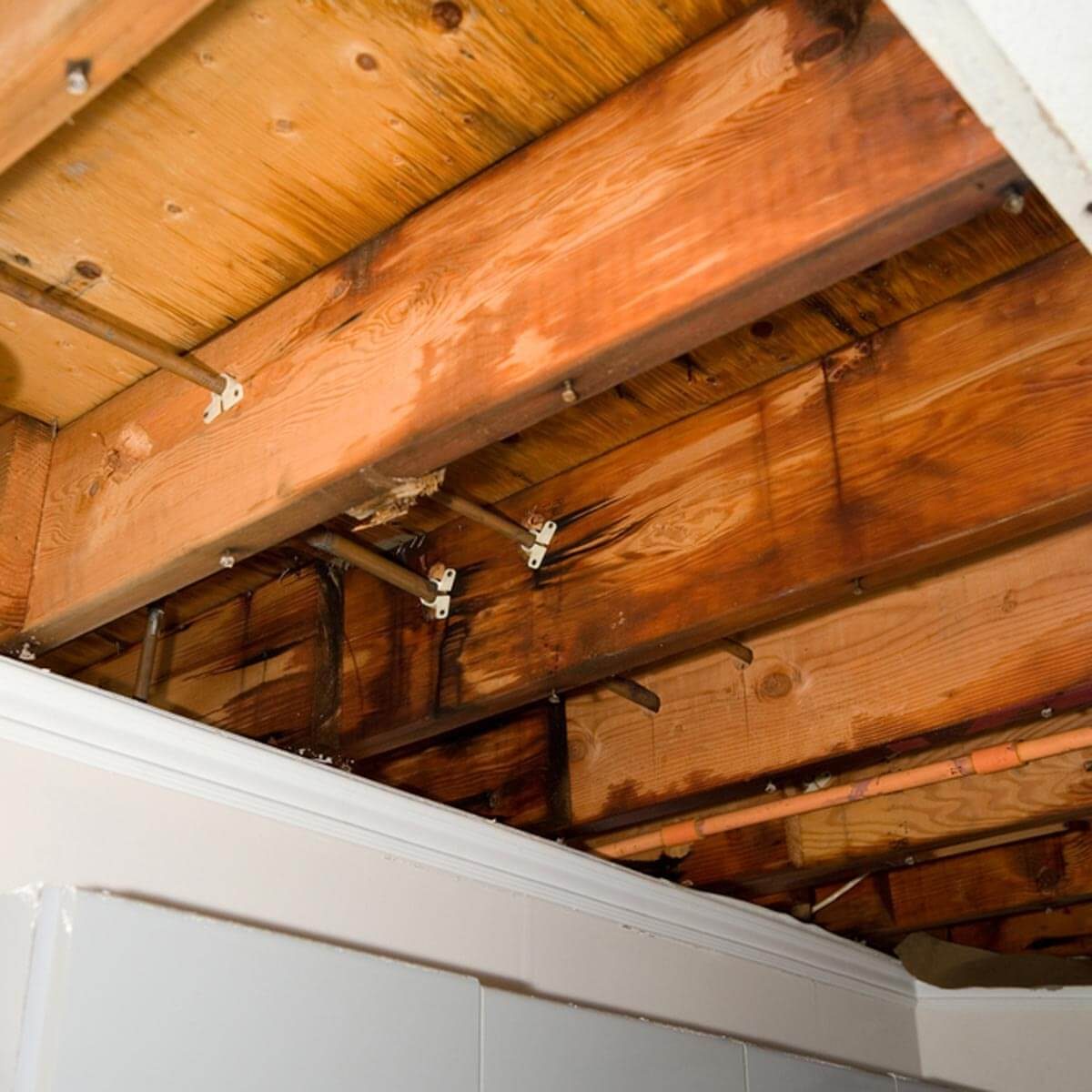
Replace Damaged Wood
All severely warped wood (particularly flooring), rotting wood and wood that has developed mold/mildew problems will need to be replaced. Pry apart damaged boards and thoroughly clean beneath them before replacing them. And if the wood is a structural component of your house, you must be very careful when replacing it so that the structure has the right support during and after the water damage repair project.
8
/
12
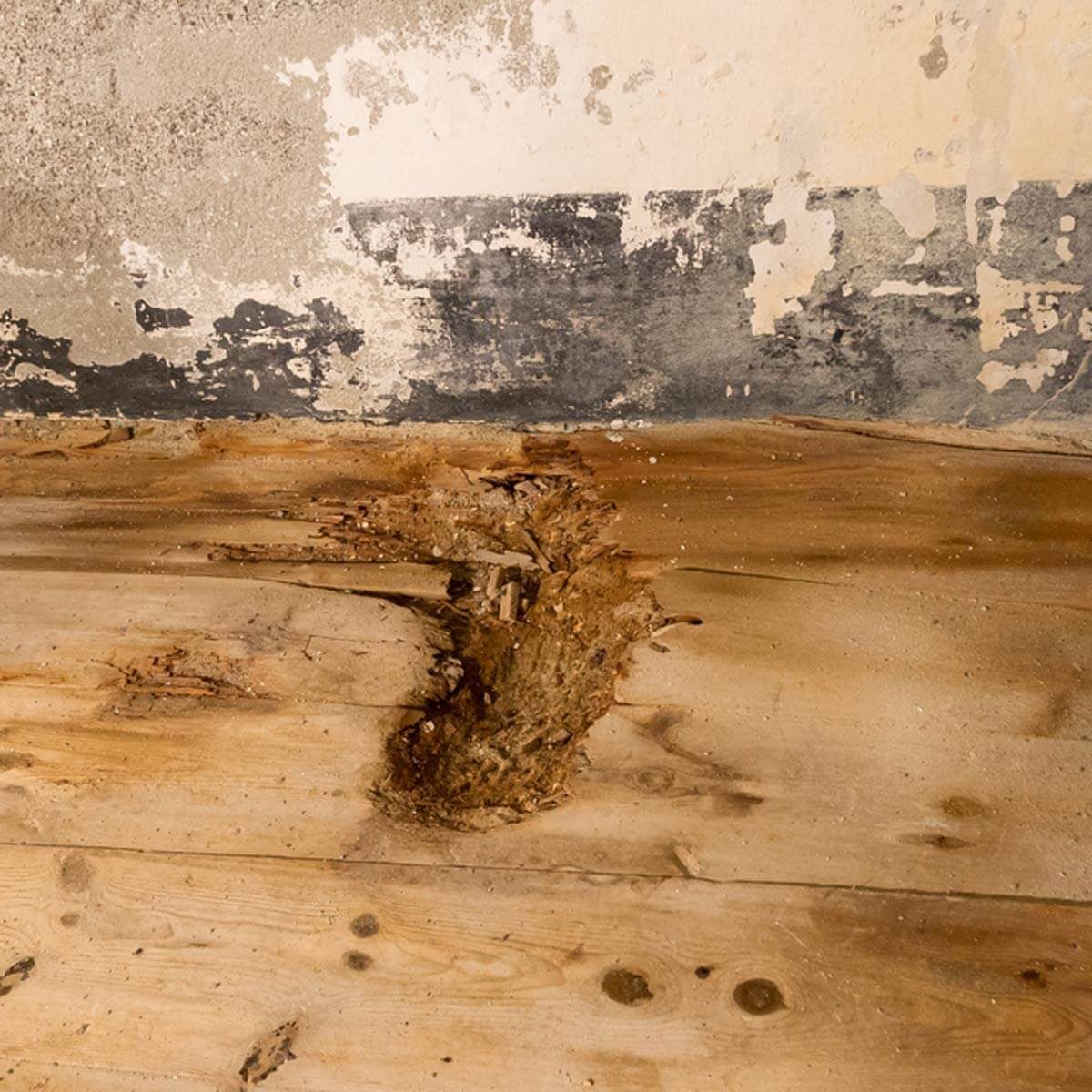
Install New, Sealed Floors
From wet carpets to swollen floorboards, it's often evident when water has damaged your floor. But if you aren't sure, it's important to check immediately in case moisture has become trapped underneath. Note that underlayment and padding are particularly susceptible to water damage and must usually be removed. However, this also presents an opportunity to install new, waterproof flooring in the area. Ceramic tile, high-end vinyl and certain engineered wood materials can all help protect floors against future water damage repair.
If a leaky toilet has damaged the floor underneath it, you can easily replace that flooring yourself.
While at it, don’t forget to check how permeable pavement can be your friend during urban flooding.
9
/
12
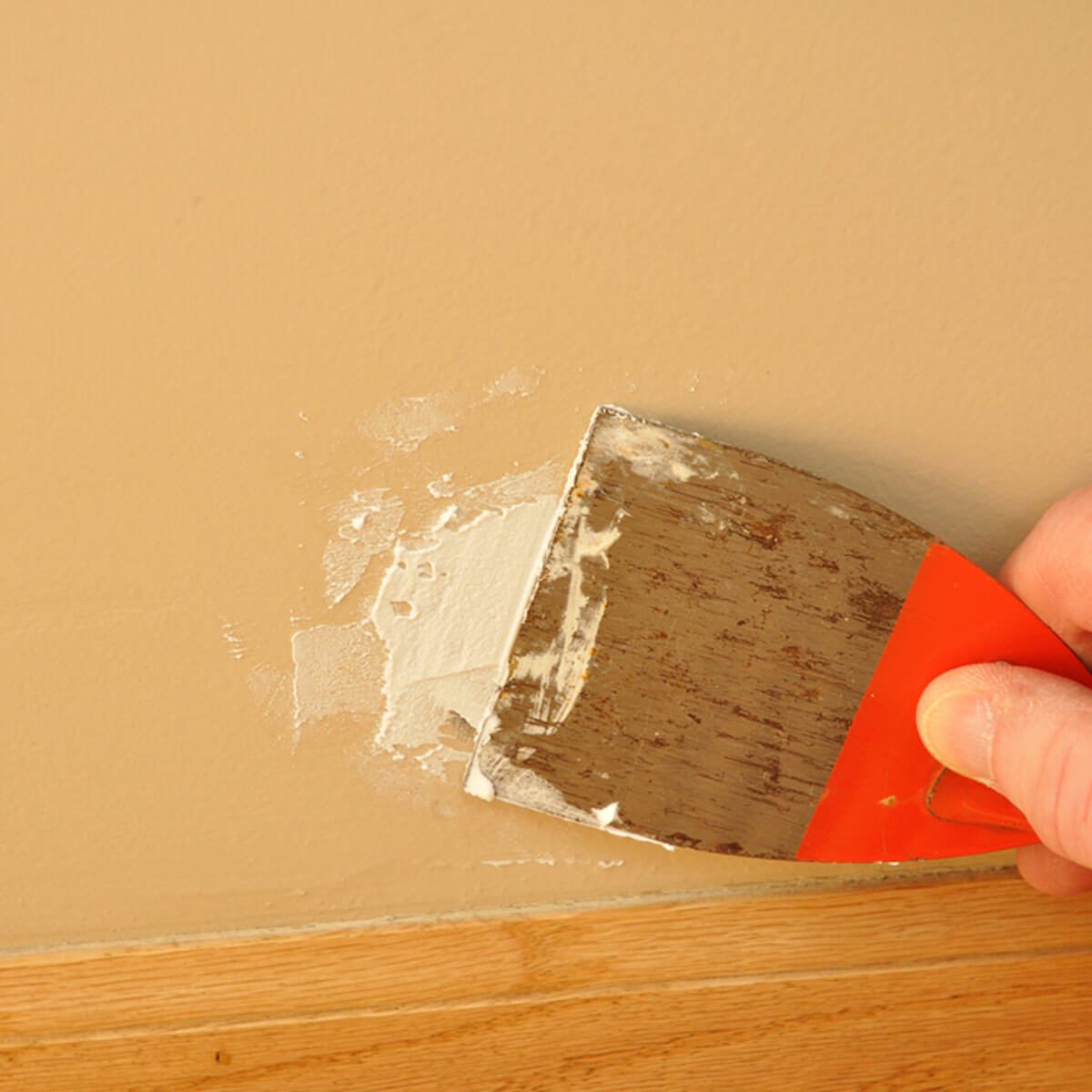
Measure and Replace Drywall
How much drywall should you replace if you have drywall water damage? Generally speaking, if drywall has swelled or sagged 3/8 of an inch or more from the baseline, then you need to replace the entire sheet. Otherwise, you can cut out and water damage repair the water-stained portion. And remember to check the insulation behind the drywall for damage as well.
10
/
12
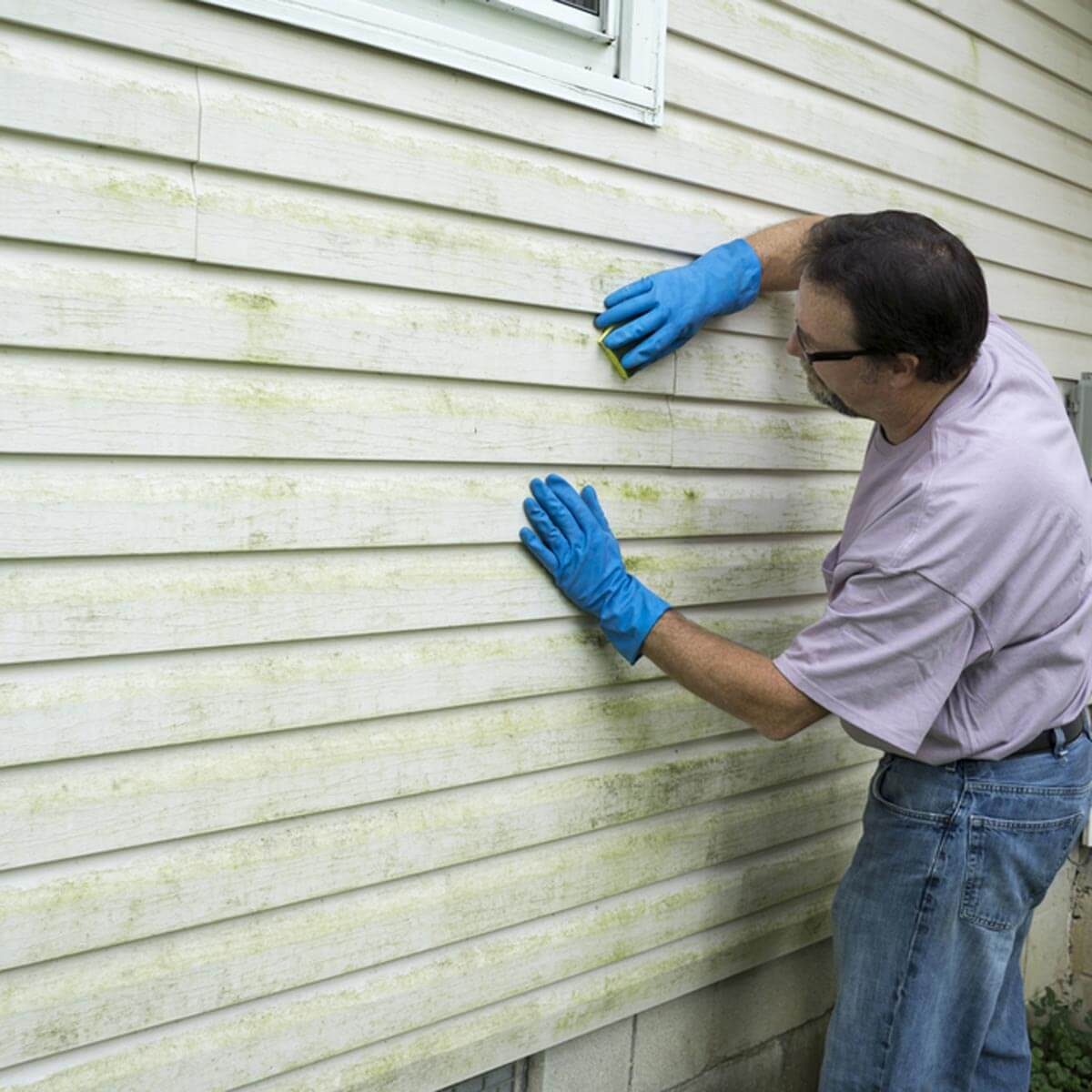
Inspect and Replace External Siding
Ice dams and other roof problems can also cause water damage to siding materials as well. Here, the biggest danger is water seeping in behind your siding and causing permanent damage to more vulnerable materials. So if this happens, you will need to remove or replace the siding quickly before rot sets in. Water can also seep in behind faux stone and other external walls around your home. So it's important to be thorough in this inspection.
11
/
12
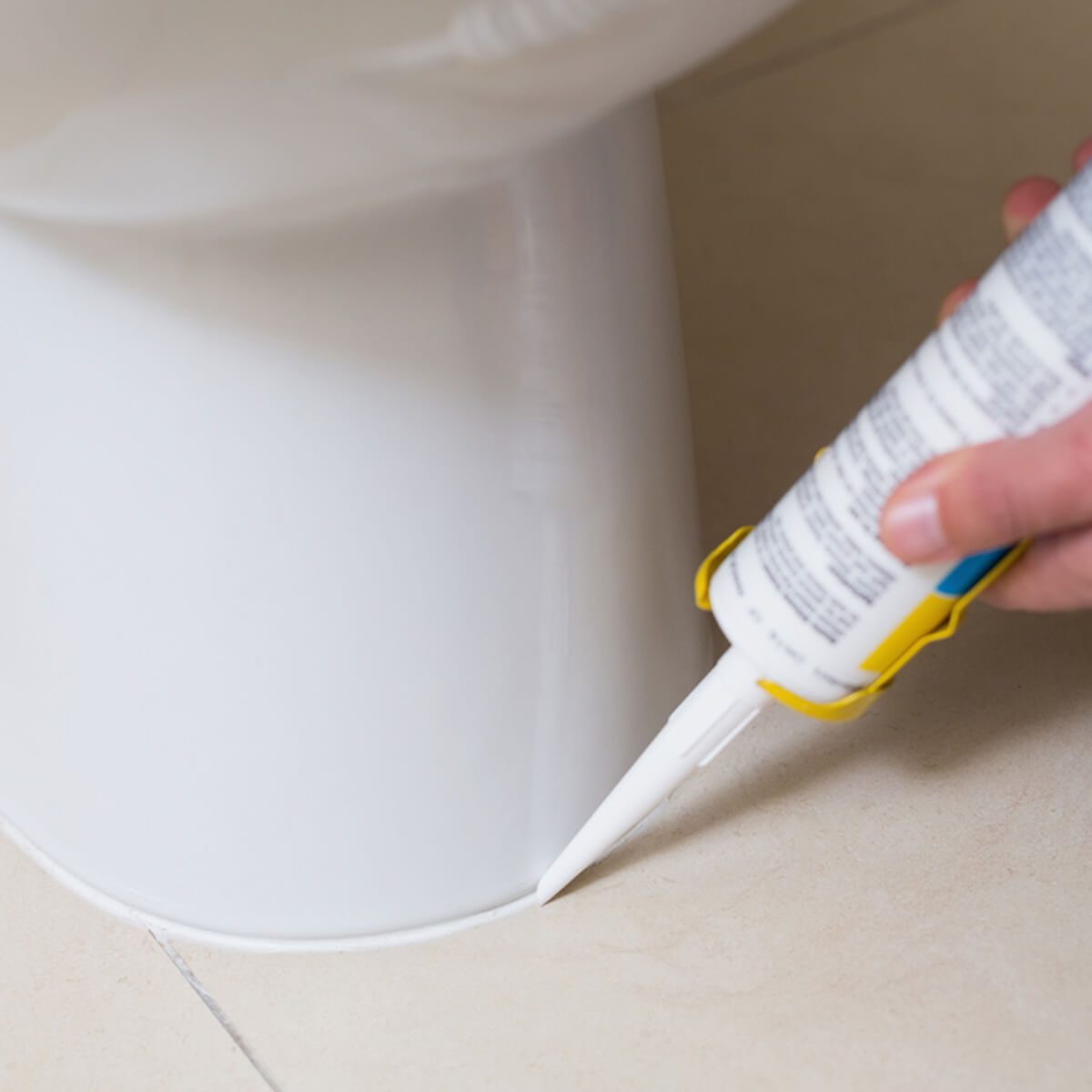
Caulk and Paint
After materials have been replaced, match your paint or stain for touch ups or apply a fresh coat. This is also the time to seal and caulk the new materials to help minimize any future water problems.
12
/
12

For Significant Damage, Check Your Insurance
If you have significant water damage, check your homeowners insurance to see what type of water damage repair is covered. Sudden events (like a burst pipe) are more likely to be covered than a slow leak. And you may be able to make a claim—but it's important to act fast.